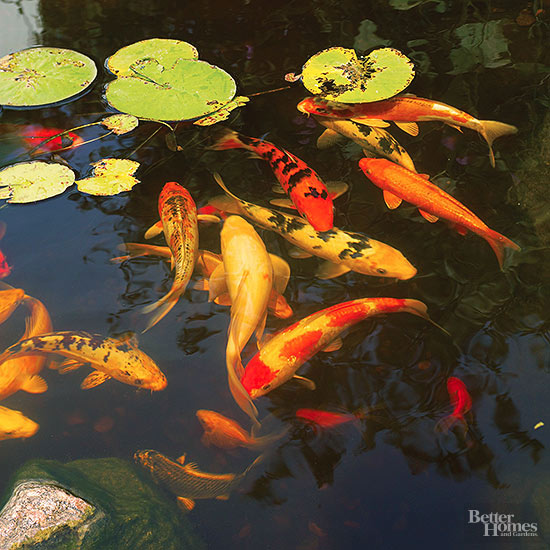What to Consider When Purchasing Fish

Start by knowing how many fish your pond can handle. One general rule is to have 1 inch of fish for every 10 gallons of water. So if your pond has about 50 gallons of water, you can have one 6-inch-long fish, two 3-inch-long fish, or six 1-inch-long fish. If you're not sure how much water your pond holds, it's better to underestimate rather than to have too many.
When purchasing fish, pay attention to the shop's environment. The cleaner the store and the ponds, the more likely it is the shop staff give the fish good care.
Avoid purchasing fish from a tank that has dead fish floating in it. That may be a sign that the fish are unhealthy or diseased. Also pay attention if any of the fish are sick. One common sign of a sick fish is if it hangs out alone and has clamped fins. Unhealthy fish may also be missing scales, bear sores, or have missing fins.
Spend your time enjoying your pond -- not worrying about what to do with excess rain water runoff.
Find out how to create a rain garden.
continue reading below
Common Types of Fish

Here's a roundup of some of the most common types of fish.
Common goldfish, comets, fantails, and orandas: These are all goldfish. They include dozens of varieties that, if cared for properly, can live up to 25 years. Common goldfish and comets have long, slender bodies and can grow to more than 12 inches long. They are excellent for ponds because they are fast-moving, extremely hardy, and compatible with Japanese koi.
- The common goldfish is the hardiest variety and can tolerate winter water temperatures as low as 35°F. They most often are bright orange, though some are yellow, silver, brown, or a mix of those colors.
- Comets are among the least expensive pond fish and are nearly as hardy as the common goldfish. Comets are usually longer and thinner than common goldfish, and their tales are usually longer. They come in gold, orange, brown, blue, red-and-white, orange-and-white, and orange-and-black. There also is a calico variety, also known as Shubunkins.
- Fantails and orandas are considered fancy goldfish and tend to have rounded, egg-shape bodies and big fan-like tails. They usually grow about 5 inches long, but can get larger if given plenty of room. They do not mix well with larger, faster, more aggressive fish, such as common goldfish, comets, and Japanese koi. They tolerate water temperatures from 45-90°F. Fantails come in many shapes and beautiful colors. Orandas most often are orange or red, and may have some white as well. Their body shapes are similar to the fantail, but when they reach adulthood, they develop a red or orange "crest" or "cap" on their heads.
- Japanese koi: Koi, a member of the carp family, are one of today's most popular pond fish. Koi are available in many different colors, including red, orange, yellow, black, blue, and cream. Because of their bright colors, they are easy prey for predators, especially blue herons and raccoons. But with proper defenses, they are a joy of a pet, swimming to a pond's edge, where they are willing to be hand fed - even petted -- by people. Koi are cold-water fish, and if properly cared for will grow up to 2 feet long and live up to 30 years. One precaution: Koi are voracious eaters and may devour pond plants if constricted to a small water garden.







